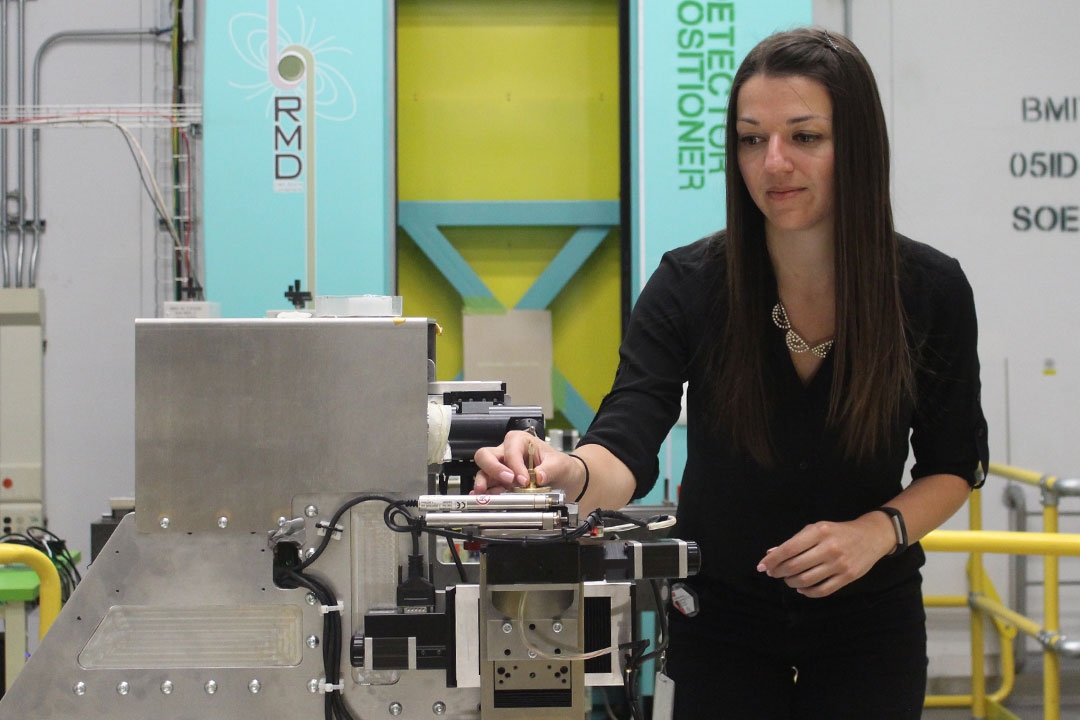
Small bones yield big results for U of S researcher at CLS
Bones tell a person’s story long after they have passed away and researchers are learning that even the tiniest of bones shouldn’t be overlooked.
By University Communications“Bone is a living record,” said Janna Andronowski, post-doctoral and CIHR-THRUST fellow at the University of Saskatchewan.
A person’s biological sex, approximate age and height, and previous health conditions can be determined by examining bones, but DNA, which is also found in bones, can confirm a person’s identity. When skeletal remains are discovered, the common practice is to extract DNA from large leg bones such as the femur or tibia. It’s a practice based on a long-held tradition.
Andronowski, a forensic anthropologist and anatomist, is challenging that tradition based on research she and her team conducted at the Canadian Light Source at the U of S.
Smaller bones, including finger bones, ankle bones and the patella (kneecap), have been shown to provide higher nuclear DNA yield rates compared to the large leg bones, but scientists didn’t know why this was the case. The U of S researchers, using micro-CT scanning to produce 3D images, examined smaller bones to see if visible cellular spaces that house bone cells—called osteocyte lacunae—resulted in the greater nuclear DNA yields. The results surprised them.
“There were microscopic amounts of soft tissue remnants, potentially from bone marrow and bone lining cells, that are likely causing the increase in DNA yields,” said Andronowski.
Without a synchrotron, the researchers would not be able to achieve the resolution required for their research. This was the first application of synchrotron radiation micro-CT imaging to try to answer forensic science questions related to DNA yield.
Andronowski was a researcher at a medical examiner’s office in New York City while she was studying for her master’s degree in anthropology at the University of Toronto. She knows from her experience that working at a crime scene is challenging on many levels.
“If you have a really complex scene where there are multiple individuals, forensic practitioners are out there trying to retrieve samples as quickly, safely and as efficiently as possible,” she said. “It would be a lot simpler to take bones from the finger (if present) with a disposable scalpel than it would be to use a bone saw in the field and take a sample from the femur, which has much denser cortical bone.”
Andronowski presented her team’s findings at the American Academy of Forensic Sciences 69th Annual Scientific Meeting in New Orleans, in February, and the research was published in the May issue of Forensic Science International: Genetics. Andronowski plans to conduct a follow-up study that will include more samples, but she is hopeful that her research will change the way forensic teams gather evidence.
“At the end of the day, as a forensic anthropologist, I am helping to bring closure to families and to assist law enforcement agencies with the identification process.”
About CLS: The Canadian Light Source is a national research facility located at the University of Saskatchewan. The CLS is of the largest science projects in our country’s history, producing the brightest light in Canada—millions of times brighter than even the sun—used by more than 1,000 scientists from around the world every year in ground-breaking health, environmental, materials and agricultural research.

